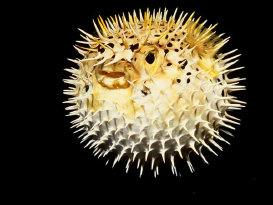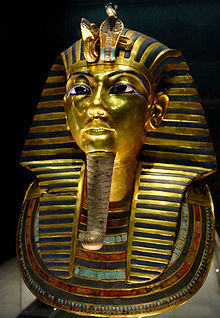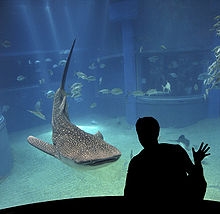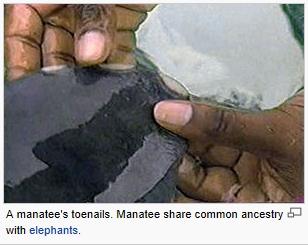

Contact

Home
Hoaxes & Pranks: Monster Hunters
Explorers for British Honduras.
The West Australian (Perth, WA)
Date: March 20, 1926
Page Number: 14
Before his departure on Sunday, Mr. F. A. Mitchell Hedges, who is leading the new British expedition to British Honduras, gave some interesting particulars of the party's intentions. They will sail direct from Avonmouth to Belize, and thence proceed by their private yacht for over a hundred miles through a maze of coral reefs to the mouth of a river up which they wall go to the interior. The last stages of the journey wll be accomplished in dug-outs, with frequent [?]ses past rapids and waterfalls, to the Maya Indjan village near the ruined city of Lubaantun in the heart of the jungle. To carry out the work of clearing the jungle and exposing the ruins. Carib Indians will be imported, as the Mayas have been found to be unfit for any work. These ruins present many unusual features. They are unlike any other Maya ruins ever discovered, and there is reason to believe they cover one of the oldest sites in the world. Specimens already discovered give evidence of five periods of occupation, and it would appear that the Maya civilisation pre-dates even that of Egypt. During the next few years much light will be thrown on its rise and fall, and that knowledge will be of great use when applied to our own civilisation. Lady Richmond Brown, who is again accompanying Mr. Mitchtell Hedges, declares that she is devoting her life to exploration and pioneer work because it is in her blood. "I feel," she said, "that I am contributing a little to the development of the Empire." The third member of the party is Mr. T. Athol Joyce, of the British Museum, who has a world-wide reputation on South and Central American archaeology, and expressed the conviction that they might find something even more wonderful than Tutankhamen's tomb.
F. A. Mitchell-Hedges part 8





The 1922 discovery by Howard Carter and George Herbert, 5th Earl of Carnarvon of Tutankhamun's nearly intact tomb received worldwide press coverage. It sparked a renewed public interest in ancient Egypt, for which Tutankhamun's burial mask remains the popular symbol.
The discoveries in the tomb were prominent news in the 1920s. Tutankhamen came to be called by a modern neologism, "King Tut".
The interest in this tomb and its alleged "curse" also led to horror movies featuring a vengeful mummy.
For many years, rumors of a "Curse of the Pharaohs" (probably fueled by newspapers seeking sales at the time of the discovery) persisted, emphasizing the early death of some of those who had first entered the tomb. However, a recent study of journals and death records indicates no statistical difference between the age of death of those who entered the tomb and those on the expedition who did not.
Alleged Degeneracy of Britain's Manhood.
WOMEN RESPONSIBLE.
Northern Times (Carnarvon, WA)
Date: April 16, 1926
Page Number: 2
Writing in the "English Review," Mr. F. A. Mitclrell-Hedges, the explorer blames women for what he considers the degeneracy of the British male.
He says:—
"By her rapid discarding of is following the example of maany primitive and utterly degenerate tribes of Indians.
"By her rapid discarding of clothes, she as only imitating the females of barbaric races. By wearing grotesque necklaces and baubles, she is imitating her degenerate sister.
"By painting and rouging, she is reverting to the uncivilised female. The latest craze, 'geranium lips,' an example.
"Many believe that our present state of bad trade is not due to weakness among our manhood, but to the wars of man. Yet in the United States of America, France, Germany and Italy, which were all also embroiled in the Great War, trade and commerce today are in a far more flourishing state than our own, and these four nations are competing with and beating us in the world's markets.
"Never in the history of this country has our prestige in sport fallen to such a low ebb. This applies specifically to our men; whatever may be the triumphs of our women, it is apparent that our men are again following a well-defined course, our failure in sport synchronizing with the deterioration of our manhood. It marks loss of virility, which in turn explains our lack of forcefulness and initiative in trade and commerce and hence much of our present bad trade and wide unemployment.
"Throughout the Dominions, and in practically every country of the world, it is an undoubted fact that
today there is a noticeable loss of respect for Great Britain and Britishers as compared with the proud position we held before the war. The weakness among our men is making-itself plainly apparent in our foreign policy. The men who govern a country should show strength, courage and decision by their acts, not by rhetoric. It is today a truism in our case that what made men great, pedanta brought low.
"By the eternal law of Nature the leader of all animals is the male; amd man is only a highly civilised type of animal. The day this law of Nature is reversed, as a nation we shall fall.
". . . The question is often asked, in which section of the com- munity is the weakness in our men most apparent? Without hesitation I state my belief that male weakness and degeneracy are most pronounced among the very people who should be our leaders and set an example to the country.
". . . I will not believe that our manhood is bankrupt in virility but I do believe that a male revival is needed to bring to the surface all the is best in our men.
"One of the first essentials is for men to fling aside petticoat government and assume their proper status.
"Secondly, it is an absolute duty of parents who have lazy indolent, effeminate sons living at home in idelness, to compel them to work, and if they are bodily and mentally sound. Young men of this type are simply parasites, and the parents keep them in ease and luxury will assuredly reap a whirlwind of trouble. The pose of many of our youths is that work is a degradation or a bore. They are blind to the dignity of labor, and in addition they are by their non-productiveness stealing from those who produce."
But is the Britisher decadent? We heard a lot about his degeneracy before the war, yet the records of that war proved the Britisher as brave, dogged and persevering in spite of all obstacles as his forefathers were. In sport, Britain's failure to lead the world as in days gone by is due to the fact that other nations specialise in different branches and make a business of it. The Britisher, on the other hand, follows a sport—not business, and is generally an all round man, not merely a specialist in one form or other the other. Mr. Mitchell-Hedges appears to have been unfortunate enough to have met with a certain class of blase lion-hunters in society, and to have
based his strictures upon the whole race on the useless effeminate youths and fast masculine females, of when there are many in the ranks of societymongers in the old—and other—countries, but it is not fair to take them as samples of Britishers as a whole.

Strange Creatures.
In Mighty Deep.
The Bunbury Herald and Blackwood Express (WA)
Date: April 23, 1926
Page Number: 4
Accompanied by Lady Richmond Brown, Mr. F. A. Mitchell-Hedges has explored distant lands and seas. They have returned to England with many specimens. "One fish," says Mr. Mitchell-Hedges, "has a most peculiar habit. It is covered with spines like a porcupine, which, when it is swimming, lie flat against the body, but if it is attacked or frightened by any other creature, it blows itself out like a balloon, and all the spines stand erect. One can imagine the astonishment of another fish when attacking to see this metamorphosis taking place in front of its eyes.
"We also obtained a sea-spider, with hairy legs four inches in length, and a striped body with a beak. There is also a tiny fish, two inches long, vividly scarlet, with a small black spot on either side, as if it had been pinched with sooty fingers. We obtained two sea-centipedes. One is abnormal. It is two feet two inches in length—a horrible thing to find winding round one's leg. As I moved the sunken rock under which it lived it touched my finger. It was agony.
"This year I watched 19 cuttlefish swimming across the surface. They were in a perfectly straight line, and equidistant. I remained motionless, then suddenly waved my arms, where upon, as one, they discharged a battery of oily, dark brown fluid.
"I have also seen many flabby creatures like enormous snails without a shell, with horns and a mottled body about nine inches long. They continually change their shape as they creep along the bottom. On being disturbed they at once eject a magenta fluid which dyes the water for two feet round, so thaf they became invisible.
"One specimen we tried to preserve is most remarkable. It is two feet in length, approximately three-quarters of an inch in diameter, round, and in color a pale yellowish-brown. It is so diffusible that when placed in spirit it dissolves. The head is hideous as it protudes from beneath the rocks situated on muddy sand. It throws out eight tentacles, each about three inches long. Although it is diffusible, we saw one seize a smail fish of 21 inches with the tentacles, which closed round the victim, drawing it towards the sucker-like mouth.
"There are mottled snakes, three to four feet long, which live beneath rocks in a foot or two of water. Tropical seas are beautiful, but what horrors they contain! "In many places it is a misery to attempt to bathe ; while to swim out any distance would be sheer madness."


MORE ANCIENT THAN EGYPT.
Townsville Daily Bulletin (Qld.)
Date: April 26, 1926
Page Number: 6
A further expedition into the interior of British Honduras is about to be undertaken by Mr. F. A. Mitchell-Hedges, who has devoted many years to exploration and deep-sea research work. Lady Brown, wife of Sir Melville Richmond Brown, and Mr.T. A. Joyce, of the British Museum, says the London "Dally Telegraph." Discussing the nature of the expedition, Mr. Hitchell-Hedges said the party, of which he was leader, was departing to-morrow for the West Indies to proceed to Belize, in British Honduras, and then by yacht to Rio Grande to explore the last ruins of a city in the interior.
Last year, the party, consisting of Lady Brown, Dr. Thomas Gann, and himself uncovered a great deal of the ruins and produced over 200 specimens, which are now in the British Museum. The site so far as they had discovered, consisted of one enormous edifice built of millions of blocks of cut stone, and covered 8 acres; huge megalithic pyramids, built of square stone blocks; also the remains of a road, which was originally covered with cement, and, an arena surrounded by large stone terraces and flat-topped pyramids, with seating accommodation for roughly 10,000 people. Great mystery surrounded the Maya civilisation and it was beginning to be recognised that it pre-dated the Egyptian.
Sooner or later, he believed, we should obtain evidence to elucidate that which had hitherto remained inscrutable. There had never been any scientific underground excavation of any Maya site, and it was in this they placed high hopes. The fact that Mr. Joyce was representing the British Museum in the expedition was in itself of the greatest importance as his scientific knowledge would be invaluable.

A SYDNEY WOMAN'S LETTER.
Cairns Post (Qld.)
Date: May 26, 1926
Page Number: 12
...
For a recent denunciation of modern women that old pessimist, F. A. Mitchell-Hedges, blames them for all the sins under the sun. In his demand for a "Male Revival"—in other words, the lord and master attitude of the Victorian male—he blames Woman's progress in the affairs of the nation for "the deterioration ofthe male"—meaning, apparently, the lizard-lounges. Poor, weak male! It is Adam's cry over again, so why worry?
...

60FT. SHARKS.
HORRORS OF TROPIC SEAS.
MONSTER OCTOPUS.
Cairns Post (Qld.)
Date: August 26, 1926
Page Number: 8
Mr. F. A. Mitchell Hedges, the explorer, who, with Mr. T. A. joyce, of the Ethnological Department of the British Museum, and Lady (Redmond) Brown, has been excavating the ruined Maya city of Lubaantum, sent recently the following despatch to the London "Daily Mail" from the Isle of Water Cay, thc Caribean:—
"Millions of years ago, during the Mesozoic period, the sea swarmed with gigantic creatures, terrifying in shape and appearance. On land, grotesque and loathsome reptiles and insects abounded. In this hot period there was no need for four-chambered hearts, fur and feathers. Eggs hatched out automatically in the heat, and the young needed no covering.
"There is no doubt that because of the same hot, steamy conditions existing to-day in the tropics we find huge and grotesque life in the warm seas, and extraordinary life forms on land, many being the direct descendants of the creatures which existed millions of years ago.
"One thing is certain—have the worst nightmare possible, conjure up in the imagination all that is hideous, think of all which is repulsive and loathsome, so that you shiver at your very thoughts, and yet there are creatures living beneath the seven seas which are beyond the greatest stretch of the imagination."
Outside the reef within 500 yards of where I am writing that immense creature, the whale shark. Rhinodon typicus, which grows to 60 feet and more in length, a direct descendant of the immense life which existed millions of years ago in the ocean, cruises backwards and forwards, although harmless, his size terrifies the native fisherman.
SHAPELESS MONSTER.
Recently on Ambergris Cay, a few miles from here, an enormous amorphous creature was washed ashore. It weighed some tons, was greyish in appearance, and to suggest what it was would be impossible. But there are strange and gigantic life form in these warm seas of which science to-day is ignorant.
That strange aquatic mammal, the manatee (sea cow), occurs here in most of the lagoons along thc coast. It is a direct descendant of the Sirenia, and is claimed by palaeontologists to be a link between the sirenia and elephant.
There is no question that to-day there are creatures in the sea who will on occasions attack and destroy large and moving objects, and of these marine monsters the world knows nothing, but throughout the tropics and spread over a wide extent the many reports of lives lost and boats over-turned are too circumstantial and authentic to be regarded as merely stories.
Not so long since from this island two of the Cayman put out in their little boat, laden with fresh fish for the mainland. Two miles away is another long, low island, and between here and that lonely, uninhabited patch of green rising from the ocean they disappeared. Their boat was found beneath the shallow water, and the sea must for ever hold the secret of the awful fate that overtook them—of the terrible creature that over-turned their craft, leaving no trace of either man behind.
That they were destroyed is certain, as both men, like all the islanders; were almost amphibious and could with ease swim the two miles that lay between the islands.
FLUNG POLE AT OCTOPUS.
Recently one of the Caymen, while sailing slowly along about a mile and a half from the island, was startled by seeing an enormous brownish mass rise to the surface. Petrified with fear, he watched the huge octopus; then, as it moved across the surface towards him, the spell was broken. He leapt to his feet, smashing and beating the water with his paddle, and, in a mad frenzy, flung a heavy pole he was carrying in the boat at the creature. Its tentacles immediately closed round this and it slithered beneath the surface.
He paddled desperately for the land, and, aided by a strengthening breeze, reached the land in safety. Flinging the pole had averted a tragedy; otherwise another boat and man would have mysteriously disappeared.
But death in many forms can come, from the sea. Innumerable fish, Medusae, and corals secrete a virulent poison. To be struck by the dagger of certain species of the Ray family is death. Many fish have sharp, bony projections which are highly poisonous. Certain corals and Medusae are covered in a gelatinous substance, and when touch violent inflammation of the arms and legs results.
I have recently discovered another ocean pest; it is a miscroscopic creature which abounds in certain waters. While bathing one is innocent of its presence, but a few hours afterwards the body is subjected to the most intense irritation, the trunk, arms and legs of the suffered become covered in small red spots very much like measles, or when one is unfortunate enough to sit down on chalk hills and other places where Red Bug is common. The a inflammation and irritation produce a high fever, which lasts for some days.
In the sea here there are fleas, lice, and bugs, spiders, beetles and centipedes. They are mostly armor-plated and bite like the dickens.



F. A. Mitchell Hedges: "...the whale shark. Rhinodon typicus, which grows to 60 feet and more in length"
The largest confirmed
individual had a length of 12.65 meters (41.50 ft) and a weight of more than 21.5 metric tons (47,000 lb), and there are unconfirmed
reports of considerably larger whale sharks. Claims of individuals over 14 meters (46 ft) long and weighing at least 30 metric tons
(66,000 lb) are not uncommon.
FALSE



CONTENTS


















